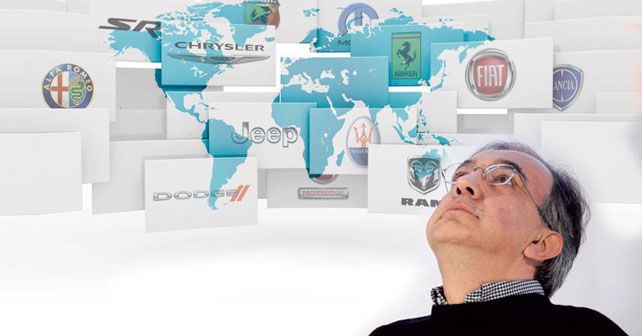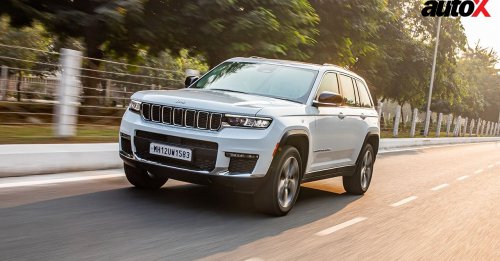With the 100% acquisition of Chrysler, Fiat has taken on a global dimension – a precondition necessary for staying put as one of the industry leaders.
Other than the New Year fireworks, the early hours of 2014 brought with them a historical development for the Italian automobile industry. One that has succeeded in bringing home the last chunk of the Chrysler share that remained in American hands. A move, totally unthinkable a decade ago, when the Fiat group seemed destined to certain death – and, moreover, one that has received a surprisingly cold response from many quarters. So much so that it left a gap wide enough to debate the future of the group that will be born out of the Fiat-Chrysler merger. A question that, basically, apart from attached sentiments is more symbolic than substantial. A thought that does come to mind is what would have happened – in terms of the amount of fanfare that it would have generated – had a similar phenomenon occurred in another country, say France or England!
Half a Miracle
These countries eye Italy top-to-bottom, even while the former has one of its most historic groups slipping into Chinese hands, and the second has totally escaped from the global auto scene for a while now – the truth is that most of its brands are now in foreign hands, either German or Indian. The Italian industry, instead, as maligned as it might be, has succeeded in acquiring Chrysler. Who knows, if it were Agnelli, he would once again quip that this is an acquisition of weak territory (like he previously did for Alfa) from the moment the Auburn Hills firm filed for bankruptcy six years ago.
But we’re still talking about one of the top-three manufacturers from Detroit. Certainly, the smallest of the three, but one of the ‘bigs’ all the same – and if not for anything else, but the rich heritage it brings with it. Starting with the Jeep brand, the true and original icon of 4x4’s, which reached a zenith in popularity like few others, as well as painted a feisty picture on the most important market in the world – the Chinese.
The final step in this process (Fiat’s acquisition of Chrysler) is the last step of what was initiated back in 2009 – when a shattered Chrysler emerged from a ten-year old marriage from Daimler. This was an initiative that gained headway under general scepticism – it’s difficult to make a healthy company by putting two diseased ones together, was the contemptuous remark by Volkswagen head, Ferdinand Piech. Certainly, what Sergio Marchionne took on was undisputedly a gamble. But five years down the line, one cannot disregard that without that one wild shot, a Fiat that was too small in dimension and totally wrapped under the spell of the European market, could not have survived the clutches of crisis that it found itself in. In the best scenario, Fiat would have been finished off by some killer brand – rather than become a predator itself, of a group that was capable of radically redefining its nature, size, and scope.
A Rich Portfolio
Today’s picture of the Fiat-Chrysler duo speaks of a group that churns out around 4.5 million vehicles per year, and has a well-articulated presence both in Europe and the US – along with a rich brand portfolio. And it doesn’t seem affected by the tremors that see Italy itself as one of the possible sacrificial victims of a similar transformation – radical yes, but inevitable if it hopes for a chance to survive. For starters, in a few months from now, manufacturing of a new, small Jeep, which has already been marked as the flagship of the American group, will commence in Italy. Jeep, incidentally, closed 2013 with historic record sales of 730,000 vehicles.
It’s never occurred that a mass produced American model (of at least 100,000 units) has been produced in Italy. But that’s not all. With the Chrysler deal, which was closed out for a figure much lower than estimated by most, Fiat has larger margins at its disposal for investing in new products – including those necessary for restarting production at its Italian factories, which touched a historic bottom last year of less than 400,000 vehicles.
Certain plants have been resurrected from prolonged agony. At the historic factory in Turin, for example, preliminary work for installation of an assembly line to produce the ‘Levante’ is already underway. This will be the first SUV under the Maserati brand for the 2015 calendar year, which could be followed by a similar model designed for Alfa Romeo.
The Asian complex
All said and done, the future prospects look encouraging – even if it’s pretty early to sing of victory. The investments, which were fed in through a dropper, have, in no small measure, given way to a rhythm for the renewal of product lines in Europe – and also on the other side of the Atlantic. And, for all that, it’s relevant that 9 billion Euros in three years is the kind of number announced for recapturing the European market. Yet Fiat is still far away from the volumes that have been put into play by the global bigwigs such as Toyota or Volkswagen. There are still measures to be taken on the financial weakness of the group, where there is debt of more than 10 billion Euros.
This without considering that the presence in the Asian markets, which till date is marginal, adds another element of inferiority when compared with the big names just indicated – apart from, of course, the other American rivals. Potentially, gaining the competitive edge in the Chinese market could come with an expansion of an alliance set in motion locally with the GAC, which till now is operational on a small scale. This could be the next big move for playing up at par in a game where Fiat has recently been able to secure a presence on the field – thanks to the acquisition of Chrysler. Nonetheless, what cannot be negated is that this is a victorious moment for the Italian automobile industry. One of those that will be remembered for a long time to come!
| And the engines?Drawing from the engine expertise of Ferrari for design and development, future Alfas will have new engines. This does not signify, like someone hurriedly mentioned, that future models will ‘use Ferrari engines.’ At Maranello, V6 engines are produced for the Maserati Ghibli and Quattroporte – for which upgrades have been made to produce 50,000 engines a year |
© Riproduzione riservata

































Write your Comment